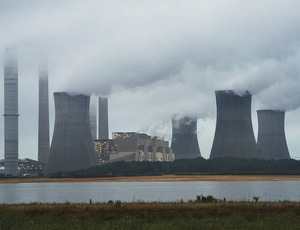
The U.S. Environmental Protection Agency unveiled a proposal to reduce greenhouse gas emissions from existing powerplants, calling for a 30% reduction below 2005 levels by 2030. EPA says the proposed rule, which it released on June 2, could lead to upgrades at fossil-fuel-fired powerplants and has the potential to create thousands of construction and electric-power-transmission jobs.
The plan could reduce carbon pollution from the power sector by about 730 million metric tons and help mitigate some of climate change's effects, EPA Administrator Gina McCarthy said at a June 2 press conference. "That's like canceling out annual carbon pollution from two-thirds of all cars and trucks in America," she said.
 |
| MCCARTHY |
The rule would lean on states to implement the administration's "Clean Power Plan." States are required to submit plans to EPA by June 2016, outlining how they would achieve target reductions.
Each state can determine how to hit its goals under the proposed rule. Possible solutions include requiring upgrades to improve the efficiency of fossil-fuel plants; implementing energy-efficiency resource standards or renewable portfolio standards; or joining a multistate market based program, such as New England's regional greenhouse gas initiative.
The National Association of Clean Air Agencies, whose members will be responsible for developing compliance plans, expressed reservations. NACAA Executive Director William Becker said that while the group is generally supportive of the proposal, the regulatory and resource challenges will be daunting. "Overcoming these challenges will require a heavy lift by all levels of government, particularly state and local," he said.
Kyle Aarons, senior fellow at the Center for Climate and Energy Solutions, said that, based on cost-effectiveness, shifting from coal-fired to gas-fired plants and focusing on customer-side energy efficiency are the "low-hanging fruit" for states to target. In terms of policy, Aarons expects states to use a mix of solutions.
Currently, Aarons says, 30 states have renewable portfolio standards. Ten also use a carbon-pricing system, such as cap-and-trade. More states have enacted renewable portfolio standards because they "are pretty straightforward compared to setting up a carbon-pricing program and they carry less political baggage," he says.
The EPA proposal has sparked considerable debate over the potential impact on jobs and the economy. The Natural Resources Defense Council echoes EPA assertions that the proposals could lead to more jobs.
NRDC released May 29 an analysis suggesting the plan could "fuel a surge in energy-efficiency investments, creating new jobs filled by electricians, roofers, carpenters, insulation workers, heating/air-conditioning installers and heavy equipment operators, among others." NRDC suggests that more than 274,000 jobs could be created.
The U.S. Chamber of Commerce countered with its own analysis, warning that the plan would lead to increased energy costs. That could cause a ripple effect through the economy and lead to 224,000 fewer U.S. jobs on average every year through 2030, according to estimates.
The National Association of Manufacturers warns that the proposal could put the brakes on billions of dollars worth of capital projects. NAM President and CEO Jay Timmons says affordable energy helped spur the surge in U.S.-based manufacturing projects in recent years. If energy prices rise, that trend could reverse. "If costs start to go up again, we'll see what we saw in the middle part of the last decade: We'll see chemical investments moving out of the country," he added.
The public will have 120 days to comment on the proposal after it is published in the Federal Register.



Post a comment to this article
Report Abusive Comment